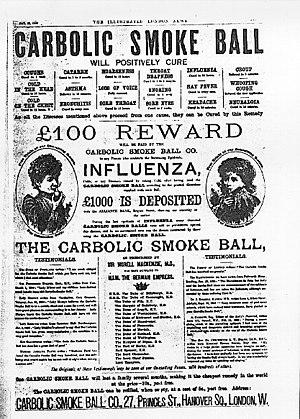When this goes live, I’ll be on the road to the Financial Bloggers Conference outside of Chicago. That translates to a day off here.
Monday, I’ll be back with a whole bucket full of bloggy goodness.
The no-pants guide to spending, saving, and thriving in the real world.
When this goes live, I’ll be on the road to the Financial Bloggers Conference outside of Chicago. That translates to a day off here.
Monday, I’ll be back with a whole bucket full of bloggy goodness.
I spent the day consoling (read: napping with) a tonsillitis-infected little monster.
Live Real, Now was included in two carnivals last week:
Festival of Frugality #327 hosted by Budgeting with the Bushmans
Yakezie Carnival – Setting Your Clocks Edition hosted by 20 and Engaged
Thanks to all of the hosts for including my posts.
You can subscribe by RSS and get the posts in your favorite news reader. I prefer Google Reader.
You can subscribe by email and get, not only the posts delivered to your inbox, but occasional giveaways and tidbits not available elsewhere.
You can ‘Like’ LRN on Facebook. Facebook gets more use than Google. It can’t hurt to see what you want where you want.
You can follow LRN on Twitter. This comes with some nearly-instant interaction.
You can send me an email, telling me what you liked, what you didn’t like, or what you’d like to see more(or less) of. I promise to reply to any email that isn’t purely spam.
Have a great week!
If you don’t know why you are hear, please read about the 21 Day Happiness Training Challenge.

America’s country sweetheart, Dolly Parton, was in a car accident recently. Although she was only a passenger in this minor fender-bender, she still suffered some injuries requiring a quick hospital visit and rest. The offending driver did not stop as he was supposed to and struck Parton’s vehicle. Parton surely has auto insurance, and hopefully the offending driver has coverage as well.
Every month, you pay a premium toward your coverage balance. Coverage varies by state, from hospital bills to repairing damaged street items, like guard rails. People with expensive cars pay higher premiums while inexpensive cars have lower amounts. Some buyers only purchase the bare minimum of coverage, called comprehensive. This coverage does not help in the Parton crash because it typically covers vehicle damage from objects, like flying rocks, rather than a collision situation.
How Much Does That Part Cost?
Repairing a vehicle after a car crash can lead to astronomical figures. A simple dent in the bumper may warrant an entire part replacement costing thousands of dollars. The offending driver in Parton’s accident is at fault. His insurance should cover Parton’s insurance deductible and any other expenses that arise. If he is not covered, she could technically sue him for damages, although there may not be many funds to pay out.
Those Medical Bills
Coupled with a car repair, Parton and her driver also went to the hospital. The offending driver uses his auto insurance to cover their medical bills. Any bills generated from the driver or passenger’s injuries goes directly to the offending driver’s insurance. If he is not properly covered with this policy feature, he must pay for the bills out-of-pocket. With medical bills costing thousand of dollars, he probably called his insurance agent right away to see if his policy has that coverage.
Luckily, Parton’s accident was not severe, but ongoing injuries can slowly siphon funds out of the offending driver’s account. If Parton has whiplash, for example, she may need multiple visits to a chiropractor or other specialty doctor. Each visit should be covered by the offending driver’s insurance. Because she has good insurance coverage does not mean that her policy should pay out. The party at-fault always pays for both car repairs and medical bills. With treatment that takes several weeks to a few months, the offending driver’s insurance rates will typically jump next policy year.
Someone Has To Pay For It
Depending on the insurance company, an accident on your record causes your premiums to rise. You are now considered a risk to the company. It is possible that you will cause another accident incurring more cost. Insurance companies must weigh their risky customers with their good drivers. Hopefully Parton recuperates quickly so the offending driver’s rates do not remain high for several years.
You may not think of auto insurance as a top priority, but the reality of Parton’s fender-bender shows everyone that accidents happen at any time. Even celebrities must cover their vehicles with good insurance to protect their assets.

When you hire someone to work on your property or provide material to build or improve it, they are entitled to get paid. A mechanic’s lien is the method of enforcing that payment.
Here is what you need to know about mechanic’s liens.
A contractor must usually give you written notice of intent to file a lien if the contract isn’t paid. He needs to do this within a short time of beginning the work. The notice will include text to the effect that subcontractors also have the right to file a lien if they are not paid. This notice gives you two methods of defense: You can pay the subcontractors directly and withhold that amount from the payment to the contractor, or you can withhold the final payment until you have received a lien waiver from each of the subcontractors.
If the notice isn’t given correctly, the contractor forfeits his right to file a lien. Also, in most places, if a contractor is supposed to be licensed to do the work, but isn’t, he’s not able to file a lien.
Subcontractors must also provide notice on intent within about 45 days–depending on the state–of the time they first provide services or material, or the lien is not enforceable.
First, you only have to pay once. If you pay the contractor in full before getting the notice of intent from the subcontractors, you can’t be forced to pay again.
Next, make the contractor provide a list of all subcontractors and keep track of any notices of intent you get. Get lien waivers from everyone involved before you make the final payment to the contractor.
Finally, you have the rights defined in the notice of intent to file a lien. You can either pay the subcontractors directly, or you can withhold the final payment until you receive lien waivers from each subcontractor.
The lien holder has 120 days to file the lien and 1 year to enforce it. Enforcing simply means that it a suit has been filed. Once that happens, you can either pay the contractor, attempt to settle with the contractor, or you can take the contractor to court to determine the “adverse claims” on your property. There aren’t too many choices at this point.
Do yourself a favor and get lien waivers before you make the final payment on any work done on your property.